In Part 3 of “Evolution vs Biblical Archaeology,” we looked at the Soleb Temple Yahweh inscription establishing the existence of the Israelites as a distinct people group who worshipped Yahweh.
We now turn our attention to the El Amarna letters.
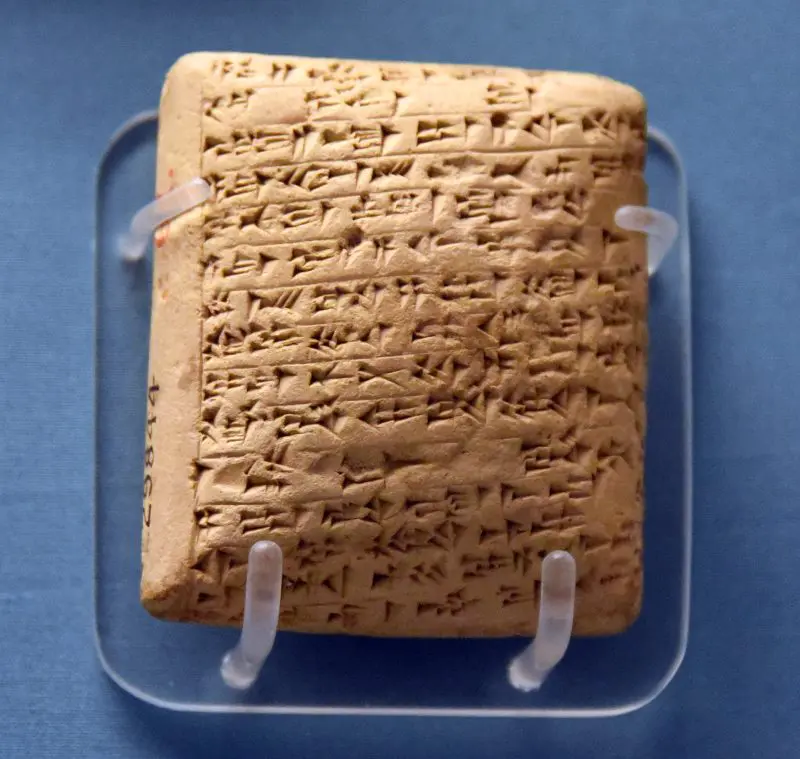
The El Amarna letters date to the 1300s BC. They are a cache of clay cuneiform tablets that came from the administrative complex of Pharaoh Akhenaten (also known as Amenhotep IV), son of Pharaoh Amenhotep III, in the city he founded and named Akhetaten, now known as El Amarna. The 382 extant letters are addressed to two successive pharaohs, Amenhotep III and Akhenaten. These clay cuneiform tablet letters are from foreign rulers throughout the Ancient Near East and are a treasure trove for archaeology.
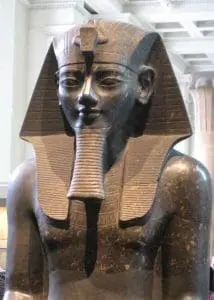
Relevance of the El Amarna Letters to Scripture
Many of the El Amarna letters are from rulers in Canaan desperately pleading to Pharaoh Amenhotep III and his son, Pharaoh Akhenaten, for military help against the invading “Habiru” or “Apiru” who were successfully invading and overrunning the land of Canaan. These requests for military aid were never granted, neither from Amenhotep III nor Akhenaten — despite the fact that the kingdoms in Canaan were vassal states of Egypt who were paying tribute revenue to Egypt.
This failure to respond with military aid on the part of Egypt (and tacit acquiescence to the loss of tribute-paying vassal states) seems inexplicable except if it were based on a weakness and inability to do so.
Some scholars have conjectured that Akhenaten was too obsessed with his religious reforms in Egypt to bother securing his Canaanite vassal states. This explanation seems highly dubious. Even granting that this were true, what about Amenhotep III? We have not one but at least two Pharaohs who provided no military aid to Canaan. Whatever the reason was, it must have applied to both Amenhotep III and Akhenaten.
We could propose as an alternate explanation that the memory of the plagues inflicted by Yahweh upon Egypt was still fresh in the memory of Egypt and that these Pharaohs were concerned about being further judged by the god, Yahweh, who had so thoroughly humbled them just a generation or two earlier.
If biblical chronology is taken seriously (e.g., 1 Kings 6:1 and Judges 11:26), the Exodus of Israel from Egypt occurred in 1446 BC, the entry into Canaan under Joshua’s leadership occurred in 1406 BC, the death of Joshua around 1370 BC, and the 1300s BC were the time of Israel’s ongoing conflict with the Canaanites in the struggle for possession of Canaan. Assuming biblical chronology to be correct, the reigns of Amenhotep III and Akhenaten occurred during this time of Israel’s campaigns in Canaan.
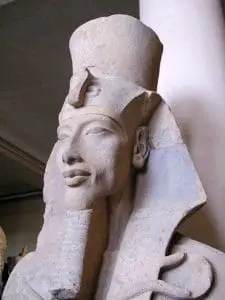
The Weight of the El Amarna Letters
The El Amarna letters provide us with not one but thirty data points which, in my opinion, establish the accuracy of the biblical testimony that these “Habiru” or “Apiru” invaders of Canaan were the Israelites.
I would like to draw special attention to an article by Christopher Eames, “Who was the Pharaoh of the Exodus?” and a video interview with Eames on the same subject. Eames’ main subject is worthwhile in its own right, but our focus here is a sidebar in which Eames systematically lays out the parallels in the El Amarna letters to the biblical testimony of the books of Joshua and Judges chronicling the Israelites’ invasion of Canaan.
What is amazing about Pharaoh Akhenaten is his shift from polytheism to monotheism, the worship of the god, Aten, exclusively. Eames describes this shift as a “sea change.” One thing that has struck me personally about ancient Egypt is its extreme conservatism and essential unchangeableness over the centuries. It is hard to imagine a greater upheaval to the fundamental fabric of a culture than altering its religion. Egypt had been polytheistic and worshipped the same gods for many centuries. Then along comes Akhenaten, who institutes this fundamental alteration.
Was this all due to the peculiarities of the person of Akhenaten? Or was he — and Egypt — reacting to the devastation upon Egypt and the discrediting of its gods wreaked upon them by the events of the Exodus? Was Egypt’s refusal or inability to help their tribute-paying Canaanite vassals the aftermath of a national humiliation?
Eames also points out that Akhenaten’s father, Pharaoh Amenhotep III, erected approximately 600 statues to Sehkmet, the goddess of healing. Why this extreme emphasis upon healing at a time shortly after the time of the exodus according to biblical chronology? This suggests some form of national calamity preceding Amenhotep III’s reign from which Egypt needed to recover.
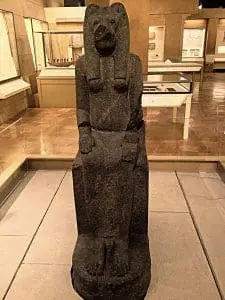
Example of one of the Amarna Letters
Here are the cities and the comparison of the biblical and El Amarna testimonies per Eames:
Acco
- Amarna: Acco asks for help in the Canaanite war effort against the Habiru but apparently later sides with them and is allowed favor (EA 88, 366).
- Bible: the Israelites failed to drive out the inhabitants of Acco, allowing them to remain in the land (Judges 1:31).
Achshaph
- Amarna: The king of Achshaph comes to fight in a coalition against the Habiru (EA 366).
- Bible: The king of Achshaph joins a coalition to fight a battle against the Israelites but is killed (Joshua 11:1; 12:20).
Aijalon
- Amarna: The enemy has control of the countryside of Aijalon (EA 287).
- Bible: Aijalon features in a major land battle, where Israel conquers “Aijalon with the open land about it” (Joshua 10:12; 21:24).
Ashkelon
- Amarna: The land of Ashkelon is now in league with the enemy (EA 287).
- Bible: Ashkelon is taken by the Israelites (Judges 1:18).
Beth-Shean
- Amarna: A strong garrison is prepared and stationed at Beth-Shean — no indication that it is conquered (EA 289).
- Bible: The Israelites fret about iron chariots stationed at Beth-Shean and fail to drive out the inhabitants (Joshua 17:16; Judges 1:27).
Gezer
- Amarna: The king of Gezer fights against the Habiru, but it seems there is a movement by his own people (including his own brother) against him, who appear to overthrow him and end up aiding the enemy (EA 271, 287, 298, 299).
- Bible: The king of Gezer is killed, but for some untold reason, the Canaanites of this area are allowed to remain and give tribute to Israel (Joshua 10:33; 12:12; 16:10).
Gebal (Byblos)
- Amarna: The king of Gebal worries about the potential of the Habiru attacking the city. However, there is no evidence that it was (EA 68, 73, 74, 76, 77, 88, 90, 121, 188).
- Bible: Joshua informs the Israelites that the northern lands, including Gebal, still need to be conquered (Joshua 13:5). However, there is no statement that they ever were.
Hazor
- Amarna: The king of Tyre, writing about neighboring Sidon, notes that Hazor is turned over to the Habiru (EA 148, 228).
- Bible: Joshua conquers Hazor and chases the enemy all the way to Sidon (Joshua 11:1-13).
Hebron
- Amarna: Hebron, in league with Jerusalem and Lachish, is at war with the Habiru (EA 271, 284, 366).
- Bible: The king of Hebron, in league with the king of Jerusalem and the king of Lachish, attends a land battle where all are defeated (Joshua 10:5). The territory of Hebron is later attacked and conquered (verses 33, 36-37).
Jerusalem
- Amarna: Jerusalem and its territory are apparently one of the last remaining places to be attacked (EA 286, 287, 288). Also note a similar-style, burned Canaanite tablet fragment discovered in Dr. Eilat Mazar’s Jerusalem excavations (speculated to be the work of the same scribe of Abdi-Heba’s letters, thus dating to the same period).
- Bible: Jerusalem is one of the last places to be attacked and conquered. When the city is eventually conquered at the start of the Judges period, it is burned (Judges 1:8).
Lachish
- Amarna: The Habiru killed a leader of Lachish and gained control of the city (EA 287, 288, 329, 330, 333).
- Bible: The Israelites killed the king of Lachish in a separate land battle and later conquered the city (Joshua 10:23-26, 31-32).
Megiddo
- Amarna: Megiddo is attacked and defeated by a group allied with the Habiru (EA 243, 244, 246).
- Bible: The king of Megiddo is killed, but Canaanites maintain hold of the city (Joshua 12:21; Judges 1:27).
Shechem
- Amarna: The Habiru are handed the land of Shechem by its ruler, Labayu (EA 289).
- Bible: There is no description of an attack on Shechem, yet the Israelites are described as having full control over it (Joshua 24:1).
Shiloh
- Amarna: The Habiru attacked Shiloh (EA 288).
- Bible: There is no description of an attack on Shiloh, but the Israelites evidently acquired it and established it as the site of the Tabernacle (Joshua 18:1).
Sidon
- Amarna: The king of Sidon writes that his surrounding cities have joined themselves to the Habiru (EA 144).
- Bible: While battle did reach as far north as the borders of Sidon, the Canaanite inhabitants remained in that city (Joshua 11:8; Judges 1:31).
As you can see, the El Amarna letters create no feeble case about the Israelite existence as a distinct people group in the 1300s BC and that the Israelites were these “Habiru” whom the Canaanite leaders were requesting military aid against from Amenhotep III and Akhenaten.
The claim is pervasive among secular academicians that the Israelites only came into existence centuries later. Notwithstanding, there seems to be no room for doubt that the “Habriu” military invasions for which the Canaanite kings requested help in the Amarna letters are precisely the invasions recorded by Joshua and his Israelite successors during the times of the Judges.
In Part 5 we will consider the Papyrus of Ipuwer







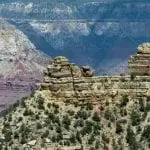
This is truly AMAZE-ing! Thanks Tom Shipley.
Isn’t archaeology a wonderful thing? Even the fact that we have COAL is attributed to Noah’s flood incident. That event “is what makes coal”.
I am so glad to see David Rives and “thecreationclub.com” here. I had referred to our mutual work with someone else but hadn’t remembered the website name correctly. Are those 2- to 3-page articles translated into Romanian and Filipino still being used? Hope so. It was a fun trek!